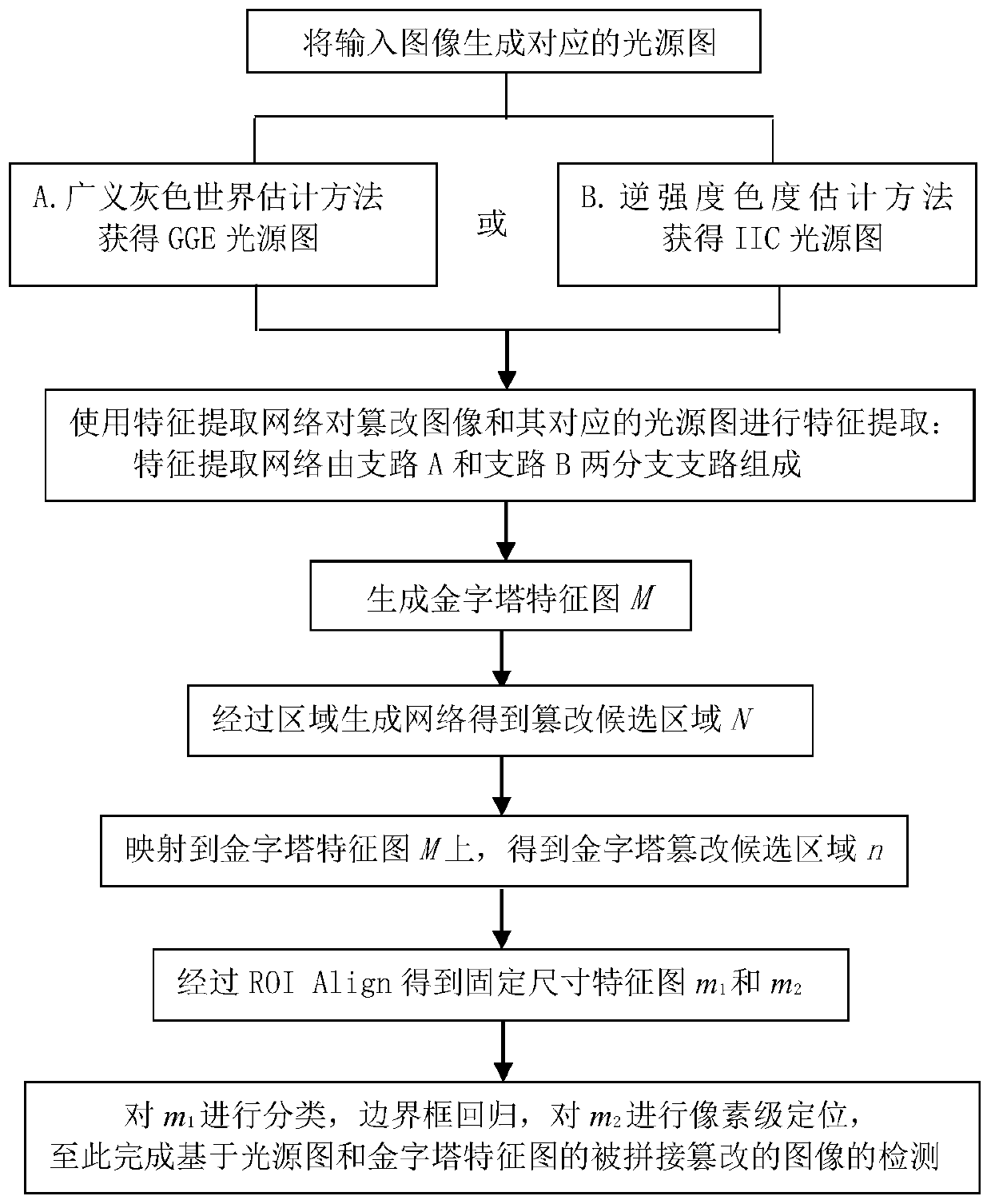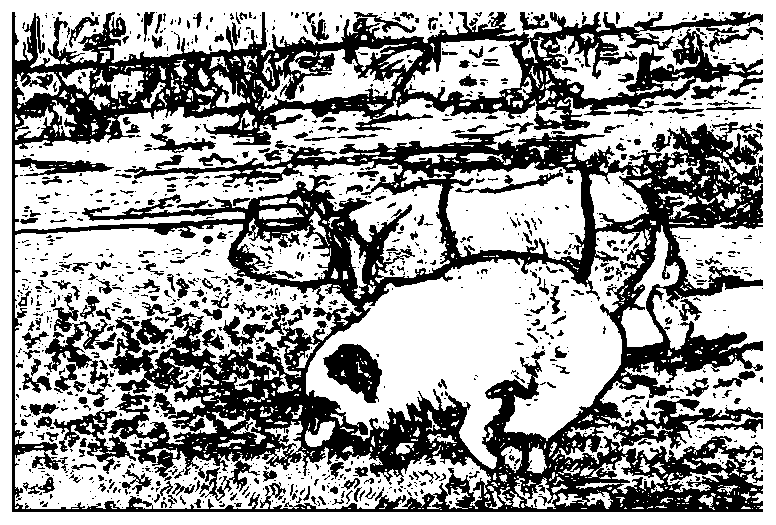Method for detecting spliced and tampered images
A detection method and image technology, applied in the field of image analysis, can solve problems such as inability to achieve end-to-end pixel-level positioning, single and incomplete image tampering features, and achieve the effects of detection, precise extraction, and high accuracy
- Summary
- Abstract
- Description
- Claims
- Application Information
AI Technical Summary
Problems solved by technology
Method used
Image
Examples
Embodiment 1
[0072] The first step is to generate the corresponding light source map from the input image:
[0073] First, the input image is divided into similar regions, namely superpixels, and then the light source color is estimated on each superpixel, and the GGE light source map containing different light source color estimates is generated by the generalized gray world estimation method,
[0074] In this way, the corresponding light source map is generated from the input image;
[0075] The generalized gray world estimation method is as follows:
[0076] This method assumes that the average color of the scene under the illumination of a white light source is gray, then the RGB color observed at the pixel coordinate x of the image is f(x), as shown in the following formula (1),
[0077] f(x)=∫ Ω e(λ,x)s(λ,x)c(λ)dλ(1),
[0078] Among them, Ω represents the spectrum of visible light, λ represents the wavelength of light, e(λ,x) represents the spectrum of the light source, s(λ,x) is ...
Embodiment 2
[0111] In addition to the following:
[0112] The first step is to generate the corresponding light source map from the input image:
[0113] First, the input image is divided into similar regions, namely superpixels, and then the color of the light source is estimated on each superpixel, and the IIC light source map containing different light source color estimates is generated by the inverse intensity chromaticity estimation method.
[0114] In this way, the corresponding light source map is generated from the input image;
[0115] The inverse intensity chromaticity estimation method is as follows:
[0116] This method is based on the physical process of object surface reflection, and the observed image intensity is considered to be a mixture of diffuse reflection and specular reflection, then the color intensity on the image pixel coordinate x channel c∈{R,G,B} is p c (x), as shown in the following formula (3),
[0117] pc(x)=∫ Ω (e(λ,x)s(λ,x)+e(λ,x))c(λ)dλ (3),
[011...
PUM
 Login to View More
Login to View More Abstract
Description
Claims
Application Information
 Login to View More
Login to View More - R&D
- Intellectual Property
- Life Sciences
- Materials
- Tech Scout
- Unparalleled Data Quality
- Higher Quality Content
- 60% Fewer Hallucinations
Browse by: Latest US Patents, China's latest patents, Technical Efficacy Thesaurus, Application Domain, Technology Topic, Popular Technical Reports.
© 2025 PatSnap. All rights reserved.Legal|Privacy policy|Modern Slavery Act Transparency Statement|Sitemap|About US| Contact US: help@patsnap.com



